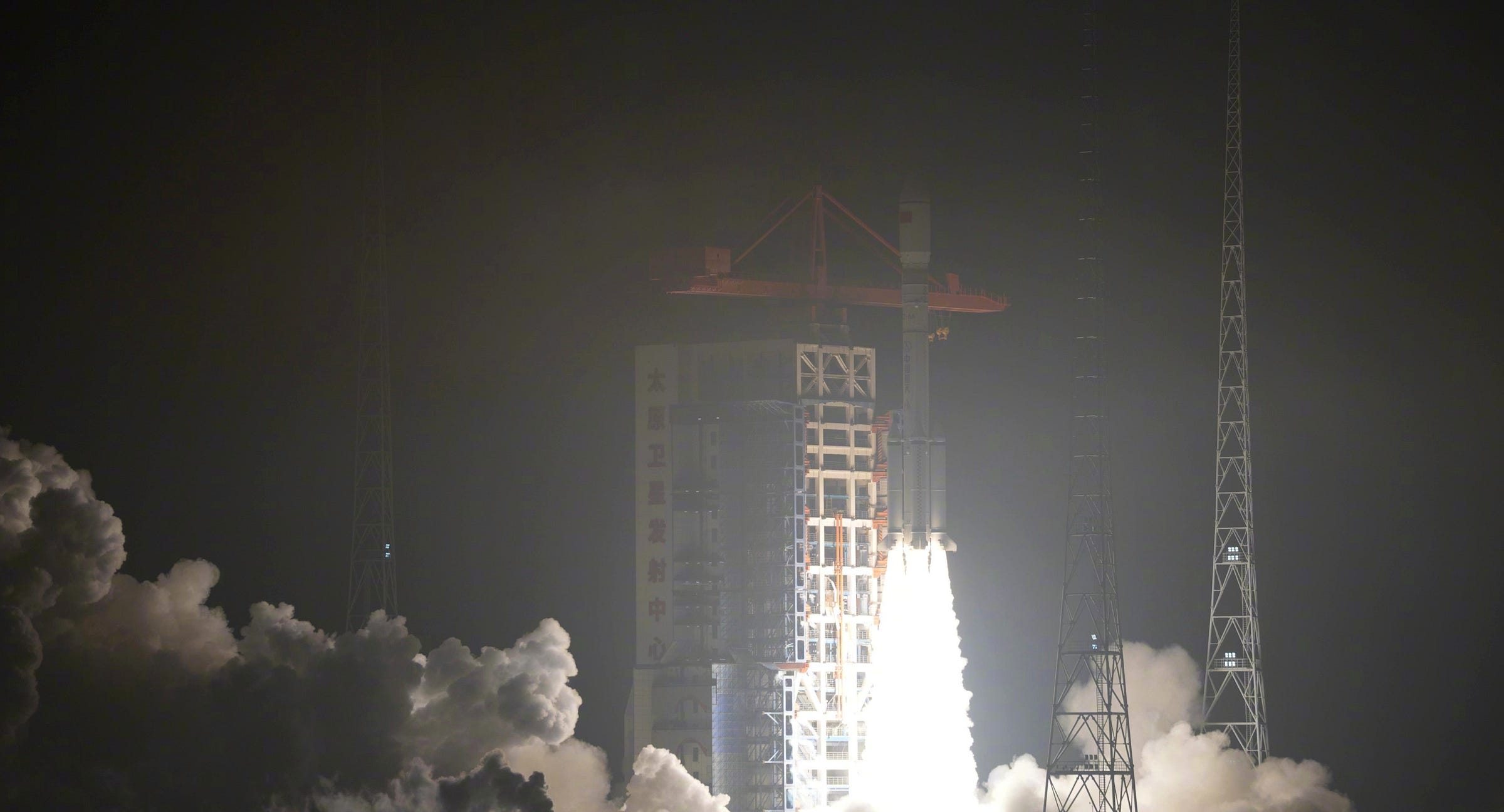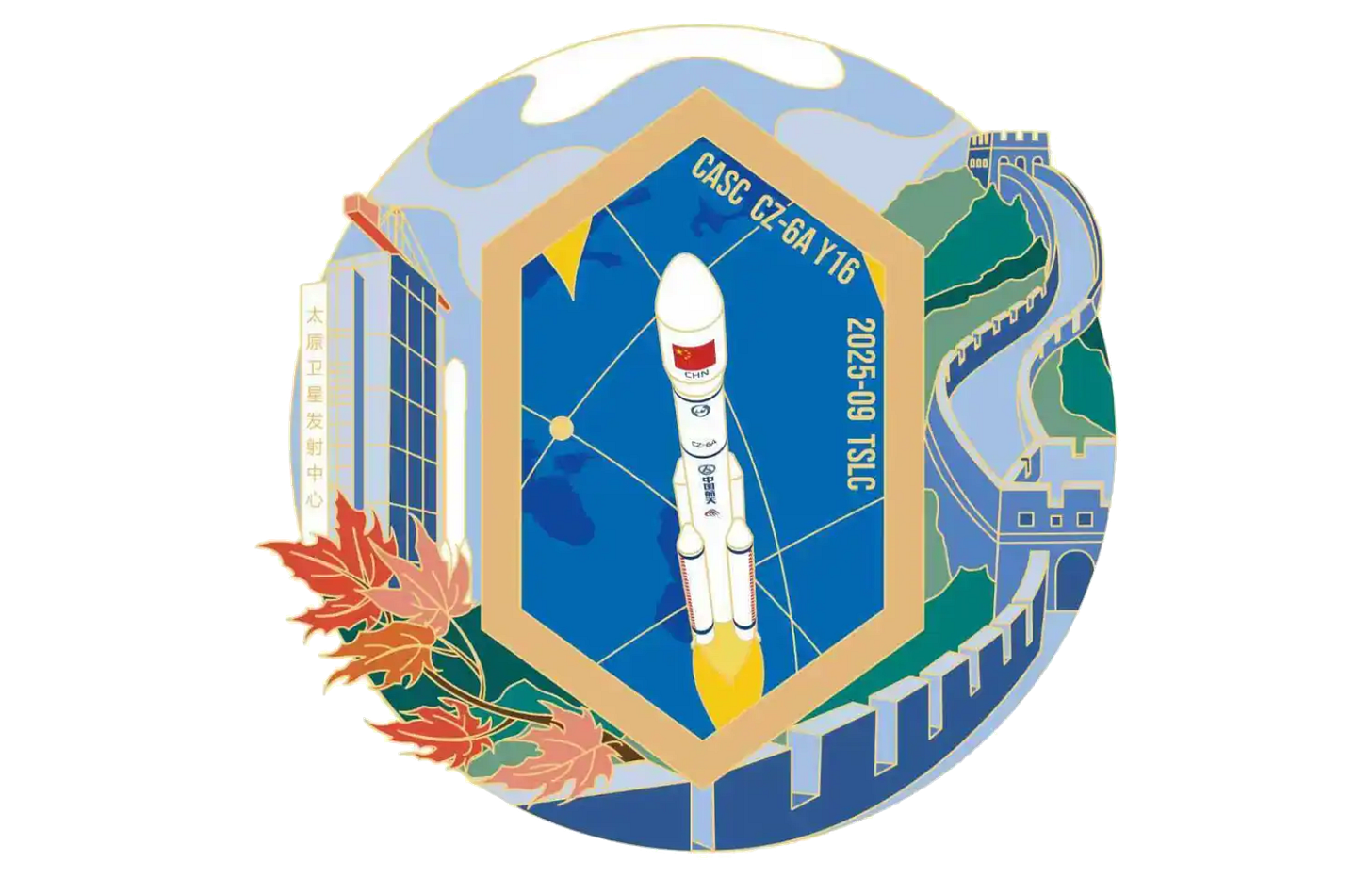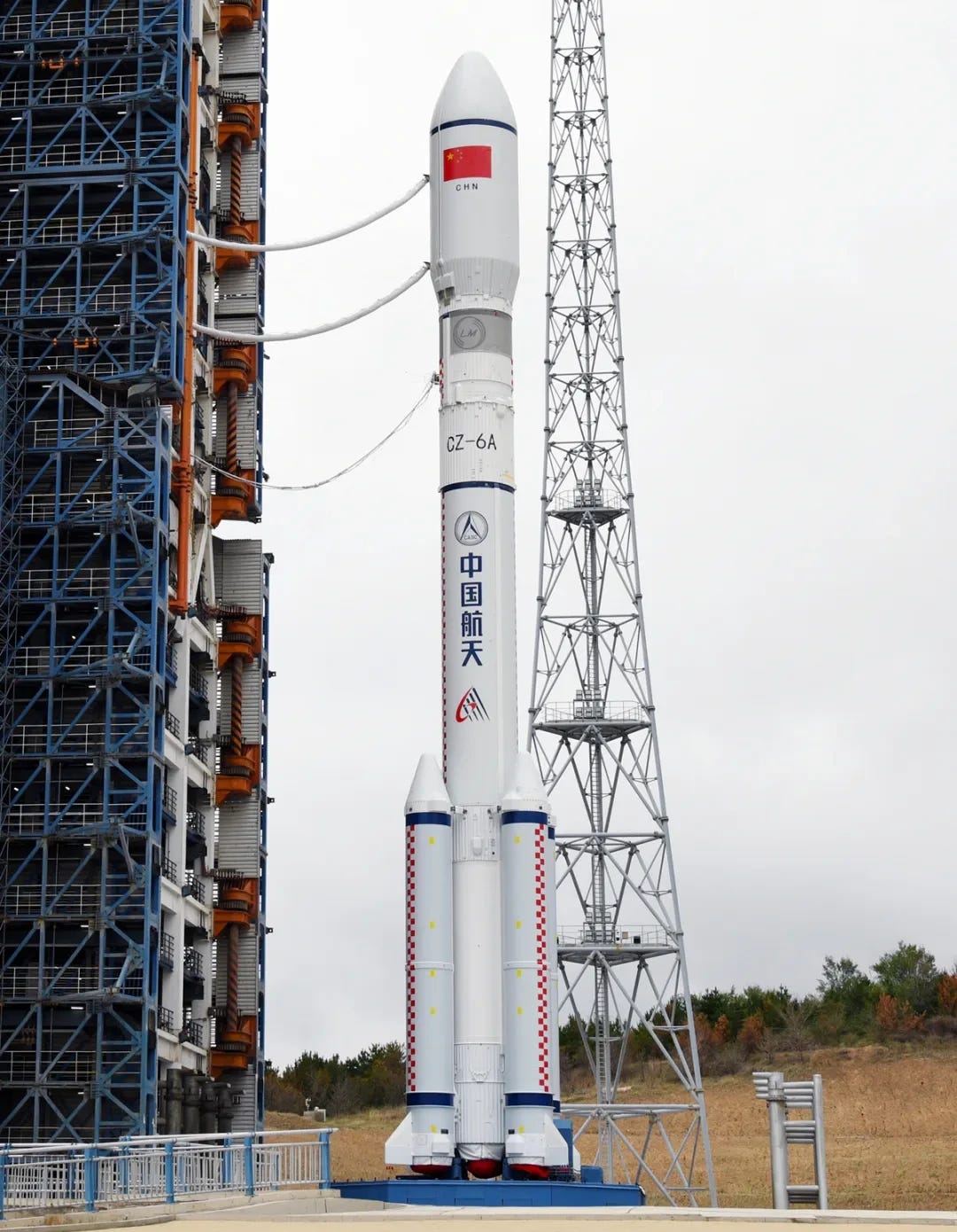GuoWang Grows With Latest Taiyuan Launch [Long March 6A Y16]
The state-backed constellation has almost caught up with its Shanghai-backed competitor.

A Long March 6A soared from Launch Complex 9A at the Taiyuan Satellite Launch Center on September 27th at 20:40 pm China Standard Time (12:40 pm Universal Coordinated Time), carrying a group of spacecraft into low Earth orbit.
Atop the Long March 6A was the eleventh batch of GuoWang (国网) mega-constellation satellites, of which five spacecraft are believed1 to have been onboard yet again. The Innovation Academy for Microsatellites, Chinese Academy of Sciences (中国科学院微小卫星创新研究院) contributed to the satellites onboard.
GuoWang is about to catch up, now with 86 satellites in space, with the Shanghai-backed Qianfan (千帆) mega-constellation, also set to provide space-based internet services, with its 90 satellites in orbit. This has been enabled by the lack of deployment of Qianfan satellites, which is on hold to troubleshoot some satellite issues.
The GuoWang constellation is operated by China Satellite Network Group, a state-owned enterprise, and wholly backed by the Chinese government. By the 2030s, up to 13,000 satellites could be in orbit, providing worldwide internet services; however, China-focused services will be the immediate priority.
Two different satellite variants are believed to be in use for the constellation, a larger version used on vehicles like the Long March 5B, while smaller ones are used when launched atop rockets such as the Long March 8A or Long March 12. An electric propulsion system is likely in use due to a planned operational orbit above 1000 kilometers in altitude, as it would be the most efficient means of propulsion to deorbit each spacecraft once they reach the end of their operational lives after several years.
Following the successful conclusion of the launch mission, the Shanghai Academy of Spaceflight Technology shared that this Long March 6A took flight just twenty days after the last, which carried three Yaogan satellites, as part of a buildup to high-frequency launch operations. Frequent launches are reportedly being enabled by more teams working on multiple launch campaigns and optimizations put forward by both senior and new team members. It is expected that the Long March 6A will fly several times per year moving forward.
Today’s launch was the 17th mission for the Long March 6A, the 246th Long March vehicle launch from the Shanghai Academy of Spaceflight Technology, and the 597th launch of the Long March launch vehicle series. This was also the 59th launch from China in 2025.
Liftoff video via 央视新闻 on Weibo, and Cosmic Penguin on Bluesky.
Livestream replay via ThatSpaceDogeGuy on YouTube.
Check out the previous Long March 6A launch
Third Yaogan Trio Reaches Space [Long March 6A Y12]
A Long March 6A roared from Launch Complex 9A at 00:34 am China Standard Time on September 7th (16:34 pm Universal Coordinated Time on September 6th) out of the Taiyuan Satellite Launch Center heading for a polar orbit. Riding on board was a small gro…
What is the Long March 6A?
This section is for those less familiar with China’s Long March series of launch vehicles.
The Long March 6A is the first new-generation launch vehicle in China to utilize a combination of solid and liquid propellants. This vehicle was developed by the Shanghai Academy of Spaceflight Technology and utilizes a two-and-a-half-stage design, the boosters burn an unspecified solid propellant with the first and second stages burning rocket-grade kerosene and liquid oxygen.
The payload capacity of the launch vehicle is currently as follows:
8,000 kilograms to low Earth orbit
4,500 kilograms to a 700-kilometer sun-synchronous orbit
The first-stage is powered by two YF-100 engines, generating a combined thrust of approximately 244 tons using rocket-grade kerosene and liquid oxygen. The first-stage is augmented by four solid rocket boosters, each producing 124 tons of thrust from an unspecified solid propellant, resulting in a combined booster thrust of 492 tons. Together, the first-stage and boosters generate a total thrust of 736 tons. The second stage is powered by a single YF-115 engine, producing 18 tons of thrust using also burning rocket-grade kerosene and liquid oxygen.
On the launchpad, the Long March 6A is believed to be up to 52 meters tall, a handful of fairings are available, and weighs 530,000 kilograms when fully fuelled. The first and second stages of the vehicle have a diameter of 3.35 meters while the solid-fuelled boosters have a diameter of 2 meters, the fairing has a diameter of 4.2 meters.
So far, every Long March 6A has launched from the Taiyuan Satellite Launch Center, in the north of Shanxi province.
Following the launch, the Academy for Microsatellites says they have had 197 satellites launched, before this mission that number was at 192.




![Third Yaogan Trio Reaches Space [Long March 6A Y12]](https://substackcdn.com/image/fetch/$s_!d1oM!,w_1300,h_650,c_fill,f_auto,q_auto:good,fl_progressive:steep,g_auto/https%3A%2F%2Fsubstack-post-media.s3.amazonaws.com%2Fpublic%2Fimages%2Ffcdc1641-0ee2-47a7-bdca-5c876182ac85_2560x1424.jpeg)

